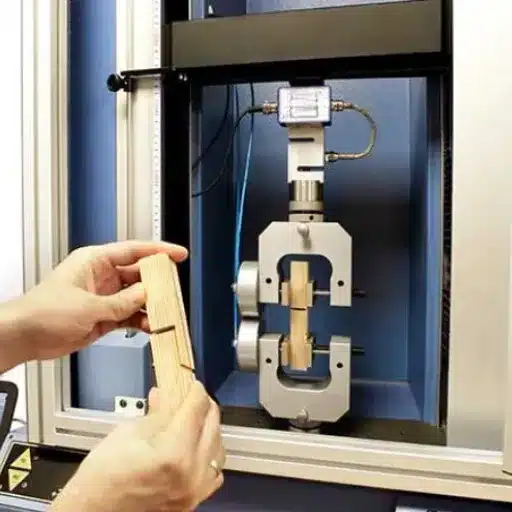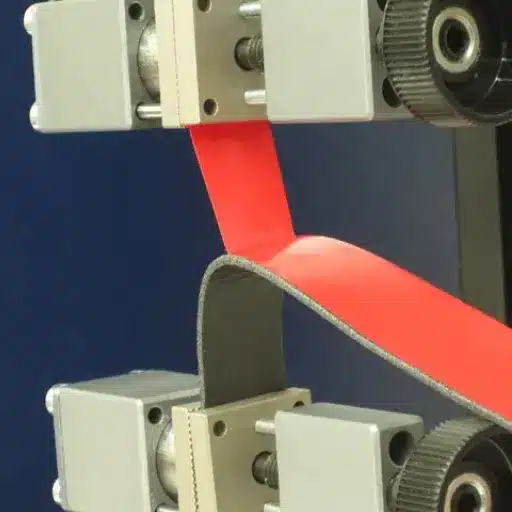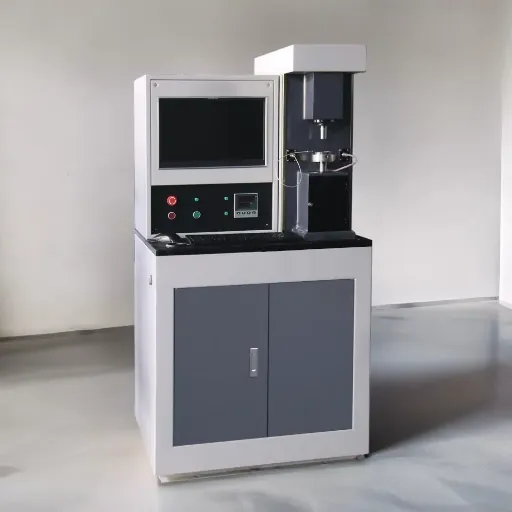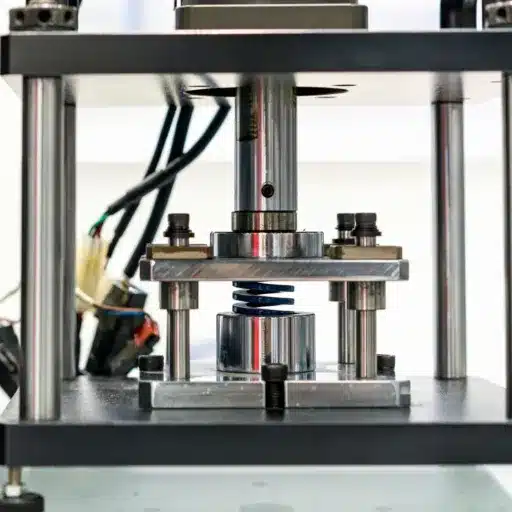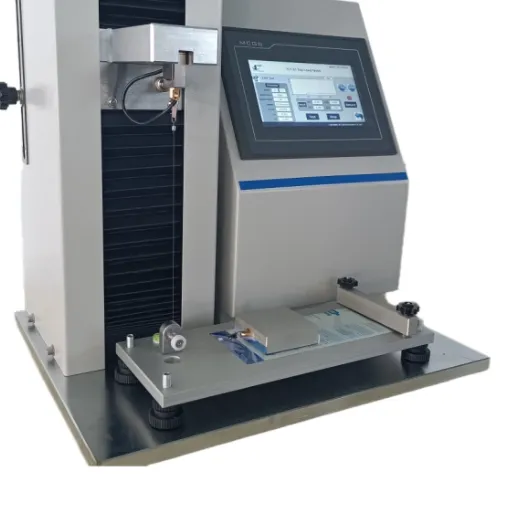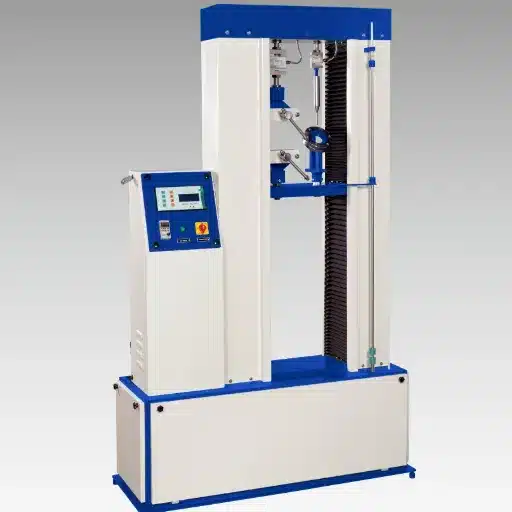Bend testing is a determining factor in analyzing properties related to hardness, flexibility, and the ultimate performance exhibited by materials across a wide spectrum of industries. This is important because this knowledge ensures that any product is made safe, of good quality, and high reliability. In the processes are the testing machines-that work by applying real stress conditions the tests measure the behavior of the material under various conditions. Bend testing equipment and procedures are somewhat fascinating, and that will be the subject of this blog post: how this machinery works, why it’s vital in material testing, and the materials parameters it measures. After reading all about this, you will have some insight into the role that bend tests play in product development and quality assurance. Whether you are a manufacturer, engineer, or just intrigued about materials science, lots of practical information awaits you here.
Introduction to Bend Testing
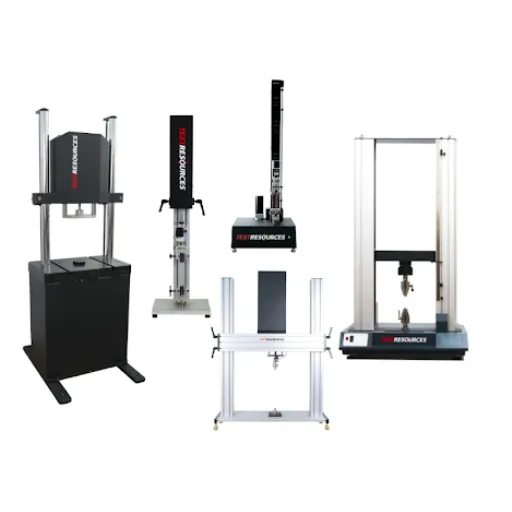
What is a Bend Test?
A bend test is a method for testing a material’s flexibility, strength, and ductility by applying force. In other words, it tests the behavior of materials during stress or deformation in actual use. During a bend test, engineers and researchers observe surface characteristics such as cracks, fractures, or manifestations of failures.
In a typical scenario, the specimen is supported at two points, and force is applied at the center point to create a uniform bending action. The ability of the material to resist stress without showing any signs of fracture or weakness is noted. This helps to identify a number of mechanical properties, including elasticity, tensile strength, and ductility, all of which are crucial to realizing the performance and reliability of the material in actual applications.
Bend tests find applications in industries such as construction, manufacturing, and aerospace, where materials are placed under stress during operations. Beams, wires, or plate elements are expected to meet certain performance criteria for safety and functionality. By choosing to carry out bend tests on materials, a manufacturer ensures that they are fit for purpose, thereby minimizing failure and improving the overall quality of a product.
Importance of Bend Testing in Material Testing
Bend testing performs an essential function in material testing to determine a material’s flexibility, ductility, and strength under applied stress. By subjecting materials under a controlled force of bending, engineers can ascertain whether those materials stand real-life conditions without breaking or deforming prematurely. This ensures that the materials utilized in a given array of projects are sturdy and dependable, capable of meeting performance expectations.
Another important reason for performing this test is to fulfill requirements of standards and safety regulations. Materials found in many industries should withstand loads and stresses such as those in construction and manufacturing. Bend fails to identify defects and inconsistencies in materials and so prevent failures and accidents while they are put to use in a hostile environment.
Yet another important aspect of bend testing is increasing the quality and durability of the final product. By studying how materials react to stress, a company could take an informed decision in terms of the materials and methods employed in manufacturing. This is in effect an efficient design, which in itself increases the chances of great customer satisfaction, simply because the product is less prone to fail constructors unexpectedly. Bend testing is perhaps the most critical procedure in upholding standards in an industry that demands trustworthy, high-performing materials.
Overview of Bend Test Machines
Bend test machines are a kind of special equipment used for testing a material’s flexibility, ability to endure stress, and its strength. Such types of machines are helpful in looking into the performance of the materials when they undergo bending forces, mainly finding any weaknesses in their elements or failures in communications. Bend test machines provide crucial data on material properties like elasticity, resistance against deformation, and deformation by means of forcibly imposing bending on the specimen under test.
Whereas the major components in bend test machines typically comprise the support fixture, the bending apparatus, and a measuring system. The support fixture holds the material tightly in place for testing, while the bending apparatus applies a force toward focusing on the material to induce stress. Modern systems could include a recording system from which results could be analyzed with a rich precision and to gain insights into the performance of the material.
Bend testing is critical in all industries where life depends on reliability, especially construction, automotive, and aerospace. It assures manufacturers of the safety and quality standards of their products. By using bending machines, companies understand better how materials behave, lower the risk of structural failures, and optimize their designs to improve performance and durability.
Types of Bend Tests
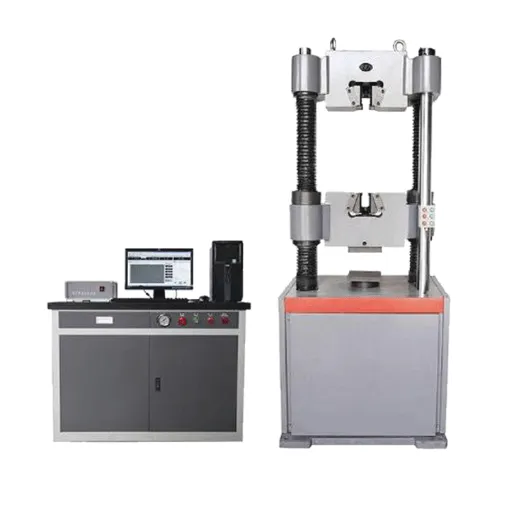
Three-Point Bend Test
The three-point bending test is the typical procedure used to assess a material’s mechanical properties or specifically its flexural strength and stiffness of materials. In this procedure, a sample of the material is rested on two supports, and a force is applied at the midpoint, thereby inducing a bending moment. The behavior of the material when subjected to this force, including the load at which the material either bends or breaks, highlights some major characteristics of the material under load.
Among some parameters that are considered is flexural strength, which can be considered as the maximum stress that the material can take before it gives away. The flexural modulus, from the initial slope of the stress-strain curve, defines how much of a stiff or flexible material is. These properties are crucial in determining if a material is suitable for any application that involves bending or flexural loading.
Being simple and reliable, the test is widely used for very many purposes. There is very little sample preparation, so its repeatability assures results that accurately reflect the performance capabilities of the given material. End-user industries of engineering, construction, and product development all use this test to guarantee that their materials fulfill standards of structural integrity and durability under stress. The use of this test by manufacturers greatly mitigates the risk of design and production of components that are reliable and efficient.
Four-Point Bend Test
The four-point bend test is a considerable method to test the flexural properties of materials. This gives the strength, stiffness, and resistance of deformation of materials under bend. Practical application of such properties can be in judging whether materials can bear certain operative stresses safely and effectively.
A notable advantage is that the four-point bend method accurately determines flexural modulus and strength. This method is different from others in that it spreads the force over a good portion of the specimen being tested and thus minimizes inconsistencies and allows for more uniform stress distribution. Hence, one can expect the results to be very precise and representative of the gross behavior of the material rather than the behavior shown at isolated points or patches.
On the other hand, the four-point bend test is very versatile and is historicized into other industries. Whether it is operating for construction, aerospace, or product design, this testing method verifies the materials in use; thus, the application incurs very few material-related risks. So, assurance of the durability of the materials and the enforcement of quality and safety requirements go into this procedure, rendering it a significant one within the engineering and manufacturing world.
Cantilever Bend Test
The cantilever bend test is yet another way of checking for mechanical properties of the materials, which include flexibility, strength, and the capacity for deformation. The test involves subjecting the free end of a cantilevered specimen to a load, which causes it to bend. Engineers and manufacturers use the test for analyzing how materials behave where already-specified conditions approach real-world situations of stress; hence, it is of great importance to industries such as construction, automotive, and aerospace.
A primary advantage of the cantilever bend test has been revealing weak points within a material such as fractures or fatigue under steady or repeated load. This information would then be used to certify those materials as reliable and safe in a range of important applications. The test also attests to the elasticity and yield point of a material, which were then used by industries in choosing suitable materials for a specific purpose to enhance their performance and decrease failure risks while in use in the field.
The very famous name of the cantilever bend test remains because of its simplest nature but in much efficient yielding of data regarding the properties of a material. If used in the quality control processes, this test would allow manufacturers to ensure strict safety standards while improving their product’s actual life. This would then lead to producing dependable designs in various fields, which would assist industries and the general consumers.
Key Components of Bend Test Machines
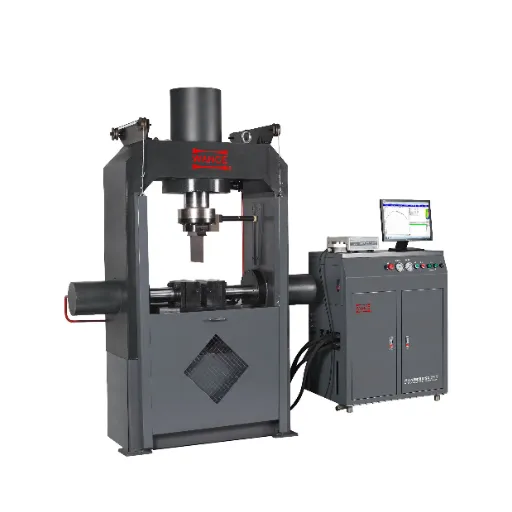
Loading Mechanism
The loading mechanism in Bend Test Machine converts the force to the test specimen. It usually includes a loading head or actuator that moves and presses upon the material to be tested. This force is, therefore, necessary to observe how the material responds under stress-like its bending and resisting deformation.
With a correct loading mechanism, the force should be applied accurately, evenly, and under control. Such precision is required for obtaining true values for the ductility and strength of the material. Depending on few characteristics commonly distributed at particular points, these include three and four-point bending configurations.
Reliable loading mechanisms must be able to work with an array of materials and test situations. Thus, the mechanism being applied in the apparatus will provide a fairly consistent force, thus minimizing errors and allowing for the correct evaluation of the material properties. This greatly helps manufacturers comply with quality control standards and maximize the longevity of their products.
Control Systems
In a bending testing machine, control systems provide for the precise measurement of material behavior along the application of force. Such systems induce variation in the application of force, time, and deflection so that performance of the material can be assumed. Thus, the control systems eliminate uncontrollable variation in the testing environment, which would otherwise render an evaluation of material properties open to error.
They are considered modern in bending testing machines, as such integration of automated control systems do provide a greater degree of reliability in measurements, thus minimizing human error. It evaluates the real-time data, adjusts the force level when necessary, and ensures uniform testing conditions during each test. Additionally, analysis of the stored data helps manufacturers quickly locate any weaknesses in the material or any discrepancy.
Test results that are considered to be quality are a direct result of the efficiency of the control system in operation. If a control system is well optimized for the purpose of a test, fluctuations in force should be minimal and parameter changes should be synchronized to the specific test. This goes a long way in making tests repeatable and reproducible, which are the base of standards in the industry and the chief assurance that the concerned product will prove reliable.
Test Fixtures and Their Importance
The test fixture sits at the core of the testing process and hence acts towards guaranteeing the reliability and accuracy of tests undertaken. A good fixture is indeed a special tool or device used to hold, locate, and support the test specimen during the test application. It ensures that the testing conditions under which the specimen is constrained are always the same, hence correctly aligning it with the testing machine and removing any variables that could possibly develop from being misaligned or moving or unstable during the testing process.
An important benefit of test fixtures is that they improve repeatability and reproducibility of the tests. Test fixtures, by their very nature, provide a setup that is fixed and uniform; even if the test takes place sometime later or is conducted by a different tester who follows the same procedure, the results obtained should always be consistent. This kind of result consistency ensures that the data collected is trustworthy and validates the existence of a reproducible procedure. Such a reliable procedure is critical when evaluating the performance, safety, and service life of the products, especially where an industry abides by rigorous quality standards.
Test fixtures are essential for testing, and they improve test efficiencies by streamlining setup time, thus eliminating frequent adjustments. Depending on the test requirements, a test fixture can be specifically designed to vary with the specimen’s size, shape, or materials. Therefore, this flexibility serves as a critical advantage for the test fixture and benefits the test in improving the results and, in turn, the testing process.
Applications of Bend Testing
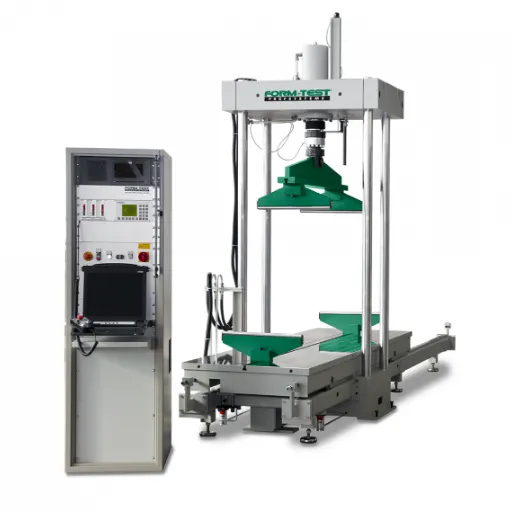
Industry Applications: Aerospace, Automotive, Construction
Aerospace
Anime bend testing is another test that is conducted in the aerospace industry, since the materials invariably encounter high stresses and temperatures. It determines if the components have sufficient bending ability, fracture resistance, durability, and acceptability into aircraft structures like wings, fuselage panels, and landing gears, among others. It is supposed to discover defects in materials at an early stage and aid in further development of materials that can withstand the demands of modern aviation.
Automotive
Bend testing in one realm of the automotive industry is crucial for checking components such as chassis parts, suspension systems, and body panels. These tests ensure that materials can withstand mechanical loads during deformation in regular use and against accidents. This testing of bends makes parts safer and hence increases the prices of vehicles manufactured by a company, according to industry regulations and consumer expectations.
Construction
Construction sees bend testing to investigate strength characteristics of materials, the prime contenders being steel bars, concrete reinforcements, and structural beams, to make sure the components withstand reluctant heavy loading and weathering encountered in buildings, bridges, and other infrastructure projects. By verifying strength and flexibility, bend testing aids safe and long-lasting construction with strict engineering specifications.
Real-World Examples of Bend Test Applications
Bend testing ensures infrastructure and materials supplied to various industries are safe and reliable. For example, in construction, reinforcement steel bars are bend tested in a routine manner to prove that they can carry loads without cracking. This proves their ductility: a material is ductile if it can sustain dynamic stresses, such as those encountered in a high-rise building or in an earthquake-prone area.
Another application is for pipelines and pressure vessels. It helps to detect any weakness in welds and in the base metal, thus avoiding failures during operating stages when exposed to high pressure and temperature. Bend testing of materials thereby helps engineers increase safety standards and improve the design life of these vital structures.
Bend testing is an in-house procedure used by the aerospace and automotive industries to certify the endurance of both metallic and nonmetallic structural elements. Materials for use in automotive and aircraft applications are subjected to huge stresses during operations. The bend test ensures that these components fulfill the stringent safety specifications so that they maintain their integrity under varying loads and the catastrophic failure of the material does not occur.
Standards and Test Methods: ASTM and ISO
Most recognized standardization bodies in materials testing include ASTM and ISO. These organizations develop industrial standards to secure uniformity, reliability, and safety across various fields, including aerospace and automotive. ASTM or ISO standards are basically imposed on the evaluation of materials and components to arrange mechanisms working under stringent performance conditions.
The ASTM standards, such as ASTM E290-Bend test of metals, describe methods to assess the property of a material to deform without cracking or breaking. They give details of the apparatus, preparation of sample, conditions of test, and criteria for evaluation, thus serving as a complete guide for the user. Therefore, ASTM standards have to be followed in order to ensure that materials and components would resist operational loads and environmental conditions.
ISO standards such as ISO 7438 for metallic materials specify the requirements and testing procedure for bend tests. ISO aims at international or global harmonization so that guidance can be provided for a varied set of regional and industrial needs. ASTM standards and ISO standards work opposite of each other, complementing one another to help promote quality and safety, given the engineer, technician, or manufacturer methods they can rely on to certify that the material is durable and the structural integrity.
Maintenance of Bend Test Machines
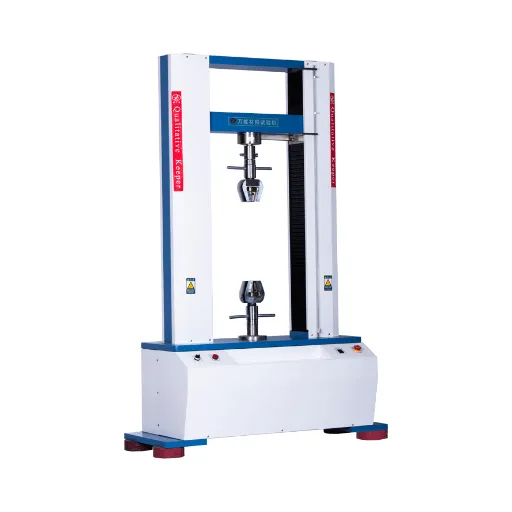
Routine Inspections and Calibration Practices
A periodic inspection and calibration of the bend test machine is mandatory to guarantee its thoroughness and dependability. First of all, do visual checks on all parts of the machine: clamps, rollers, main frame-from anything that may herald some wear or damage. Care should be taken to check the hydraulic or mechanical systems and prevent a decrease of performance and check that all the moving parts have nothing obstructing them or rejecting debris.
The periodic calibration of the machine shall be done to ensure the accuracy of the test results. Certified calibration instruments shall be used, and the corresponding calibration procedures shall follow national or international standards, such as those of ISO or ASTM. Assessment of the alignment system and force measuring instruments should take special attention, as these two are presumed to assess the bending force test itself. Whenever a discrepancy comes up during calibration, this must be fixed immediately so that inaccurate tests cannot be allowed.
All inspections and calibrations should be recorded in a logbook or a maintenance record. This helps in tracking its performances throughout its life and is also a requirement of quality assurance. People should be periodically trained in the proper use and maintenance of the machine to maintain its long-term reliability and to minimize the risk of operational error.
Best Practices for Long-Term Performance
Regular maintenance and monitoring are provided for the long-term performance of machinery and equipment. Carry out regular inspection work to identify early signs of wear, damage, or misalignment. Fixing these minor problems promptly will prevent major failures. Maintenance should be performed according to the manual recommendations and operational requirements, so manufacturers should never miss an important maintenance window.
Proper training for personnel is yet another aspect that is required. Users need to be trained in both how to operate the equipment and how vital routine maintenance is. Regular trainings help reinforce proper procedures and minimize user errors. Employees should also be informed on recent updates to operational best practices to keep the equipment running at optimal operation levels.
Finally, accurate documentation in a centralized system of every inspection, calibration, repair holds enormous value in spotting trends in equipment wear, achieving consistency in performance, and meeting quality assurance standards. Following the above best practices keeps the longevity of equipment high, improved efficiency, and reduction of downtime; therefore, maintain records meticulously.
Troubleshooting Common Issues
The first step in troubleshooting issues with equipment is identifying the root cause. Look at the equipment for wear, misalignment, or outright damage. Check for power connections or switches, and settings: “Are they set correctly? Do they work correctly?” Little things can be quickly fixed and resolved.
In the unfortunate event of a continuing problem, check whether the equipment has been maintained regularly as per the maintenance schedule. Problems arise when your calibration schedule is irregular or your filters get clogged or you fail to update your software. Make sure every update or replacement required has been applied. The user manual or operating guide should give specific instructions on handling common operational problems.
For the more complex issues, such as repeated failures or massive performance drops, one should consult a certified technician or specialist. All the symptoms and the resolution steps taken would have to be written down to cast the most accurate picture of the problem. This would bring about a speedy and correct solution. Remember that if one properly uses troubleshooting techniques, one can minimize downtime and damage over time.
Frequently Asked Questions (FAQ)
Q Bending testing machine-what it is?
A bending testing machine constitutes specialized testing equipment designed to carry out flexural strength tests, bending tests, and other tests that determine the performance of materials in bending loading. It determines how materials behave under different bending forces and aids the determined mechanical properties of a material including stiffness or ductility.
Q Why is bending test conducted?
The purpose of the bend test is to determine the material’s resistance to bending forces causing failure. Such a test measures the maximum bending stress that a material can withstand without permanent deformation or bending fracture, hence aiding the study of its flexural characteristics and general strength.
Q Explain how a 3-point bend test works.
The most common form of bending test is three-point bending. Here, the standard specimen is placed on two supports and a load is applied at a single point in the middle of the test specimen. It is, thereby, possible to determine the bending stress and deflection of the test specimen, which in turn provide data important for evaluating the flexural strength and modulus of elasticity of the candidate material.
Q What are the standards usually used for bend testing?
ASTM standards and ISO test standards are commonly used for bend-testing procedures. The set standards ensure uniformity and reliability for the test results obtained from the operating of the bend test machine.
Q Regarding materials, what can actually be tested by the bend testing machine?
A bending test machine may be used to test for plastics, ceramics, composites, and concrete beams. Its versatility is useful in evaluating various mechanical properties for the industries on whose behalf the testing is done.
Q What is the difference between a 3-point and a 4-point bend test?
Basically, in three- or four-point bend tests, loads are applied differently. In the 3-point bending test, the force is applied at a single point, whereas in the 4-point bending test, the force is applied at two points. This difference creates a stress distribution, a mode of failure, which eventually affects the outcome of the flexural test.
Q What is a bend fixture? And why is the bend fixture important?
A bend fixture is a prime part of a bending testing machine holding the test specimen during the test. It should allow for exact alignment and positioning, hence, good results under repeatability conditions for flexural strength testing.
Q Do bending forces deform materials?
Bending forces, a form of bending stresses, bring about the very deformation in materials by means of shape changes and, in some cases, their ultimate failure. The degree of deformation is greater or lesser depending upon whether the material is ductile or elastic, so it is quite important to check these properties in bend test applications.
Q What kind of apparatuses are flexural strength tests done upon?
Some of the common ones used in flexural strength tests are universal test machines, bend test machines, and special fixtures. All these allow for the determination of the loads, deflection, and other essential parameters of bending for the evaluation of material performance.
References
Bend Test Machines – Describes how bend test machines are configured to evaluate material ductility, bend strength, and fracture strength.
BEND AND FLEXURAL TESTING: An Introduction – Provides an overview of bend testing, also known as flexure or transverse beam testing, and its applications.
Bend (Flexural) Testing – Explains how ADMET machines measure the flexural properties of various materials like metals, plastics, and concrete.


